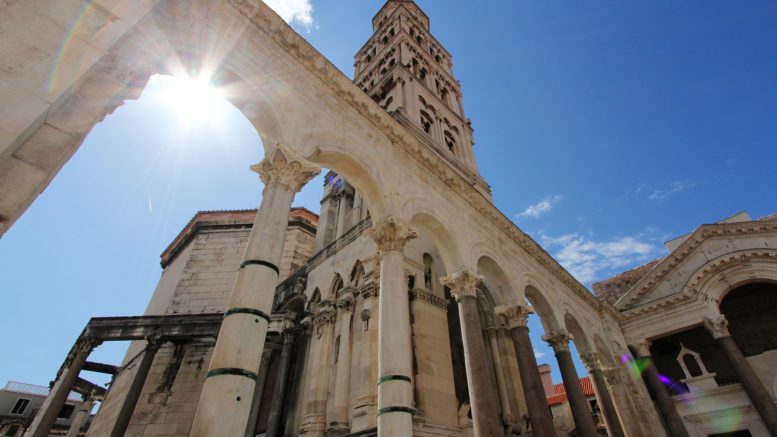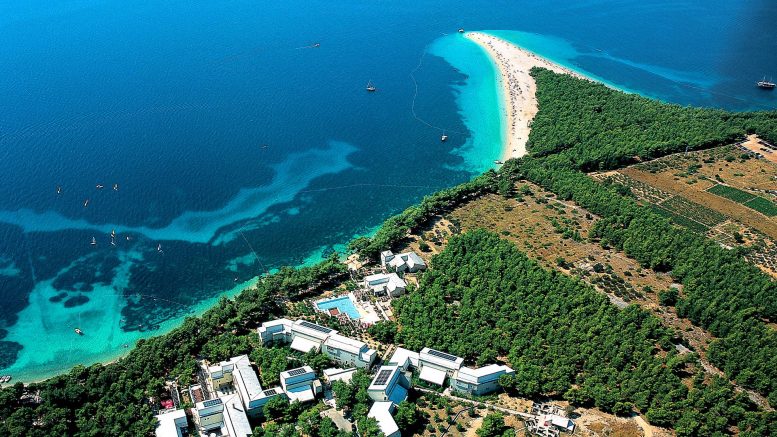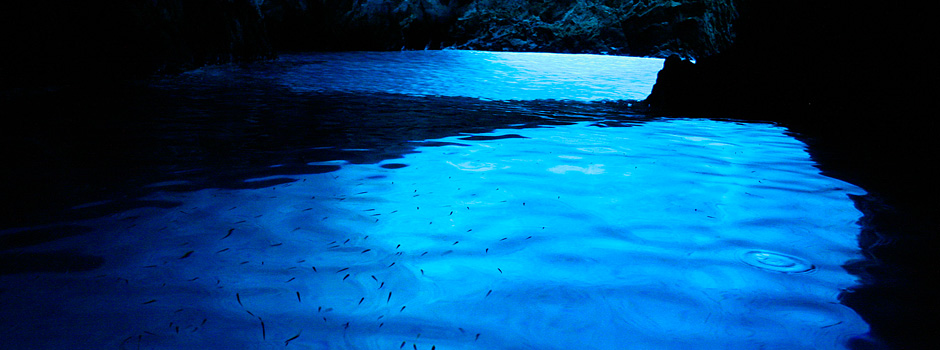This post is also available in: Croatian
Croatia is a small country, but rich in natural and cultural-historic values which are revitalised for tourist purposes. Split-Dalmatia County also abounds in attractions, a consequence of turbulent past, but beautiful nature as well. On this area there is a mountain range, with Biokovo as one of the highest mountains in Croatia. It separates continental features of Dalmatian Zagora from Mediterranean beach ambience. Nevertheless, five the most attractive natural and cultural-historic values of Split-Dalmatia County, which have become tourist products, are Diocletian’s Palace in Split, ancient Salona in Solin, Golden Cape beach in Bol on the island of Brač, Paklinski islands near Hvar and Blue Cave on Biševo islet near Komiža on the island of Vis.

Split – Diocletian’s Palace
At the very heart of Split there is Diocletian’s Palace, one of the best preserved Roman buildings in the world. Former emperor’s palace was built as a combination of luxury villa and Roman military camp, divided into four parts with two main streets. This rectangular building had four towers at its corners, four smaller towers on the walls and gates on each side. During centuries, Diocletian’s Palace was restored, and in its cellars today various cultural manifestations are held. Although today’s appearance is different from the original one, its contours are still visible and is therefore one of the most interesting buildings of this type in the world.

Solin – ancient Salona
All Dalmatian towns had turbulent history since the ancient times. In today’s Solin, only six kilometres from Split, there are remains of ancient town Salona. It was a metropolis of Roman province Dalmatia. At first, it was a costal stronghold and a harbour of Illyrian Delmats. In history, first mention of Salona dates back to 119 year BC, in times of wars between Illyrians and Romans. Today this archaeological site attracts visitors, primarily with remains of former arena and amphitheatre, palace and baths.

Bol – Golden Cape
One of the most beautiful beaches in the world is the Golden Cape, a beach in Bol on the island of Brač. It is also a kind of a natural monument and one of the biggest and the most beautiful natural attractions of the Adriatic. The Cape stretches out 400 metres into the sea, and it emerged by stacking of small stones from Vidova gora hill, which is the highest peak on Adriatic islands. An interesting fact is that, depending on the waves and sea currents, the top of the Golden Cape is constantly changing. Therefore, not rarely the beach can turn to other side during your sunbathing.

Hvar – Paklinski islands
In front of Hvar town there is a group of about twenty islets and rocks – Paklinski islands. People from Hvar call them also Hvar’s islands. They are interesting because, luckily, contemporary tourist change hasn’t touched them yet, so the nature is incredible. This beautiful archipelago is the place for divers because in its underwater there are various species of fish, shells and other sea organisms. Jerolim, Stipanska, Ždrilca, Vlaka and Palmižana are popular tourist excursion points on Paklinski islands..
Jerolim – named after a missing church in late 15th century. There is also famous and traditional Hvar’s naturist beach.
Stipanska – one part is also intended for naturists, equipped with showers and a restaurant.
Ždrilca – a wooded bay with secluded places for relaxed sea and sunbathing.
Vlaka – a village with a church dedicated to St. Clement and a traditional excursion point of Hvar people.
Palmižana – the most famous Hvar’s excursion point with nautical marina, especially interesting for boaters.

Biševo – Blue Cave
On the east side of Biševo islet, not far from Komiža place, there is a natural phenomenon Blue Cave. Through artificially expanded small opening, the cave can be entered with small boats with paddles, so tourists can visit this extraordinary cave. Another opening is under sea surface through which sunlight penetrates and reflects on the cave walls. This way it gets blue colour, while everything in the sea water becomes silvery. Due to all this, Blue Cave is world-famous tourist attraction. The colour of the sea becomes the most interesting around noon, when he sunlight reflects in its interior the most.
These are only some of numerous attractions and possibilities offered by Split-Dalmatia County, destination that is becoming increasingly significant, not only on national, but on a world tourist map as well.
This post is also available in: Croatian






